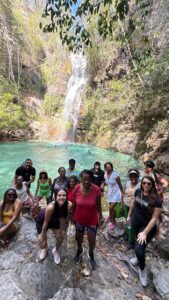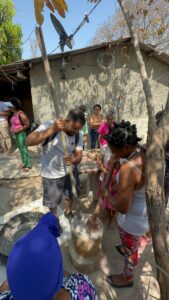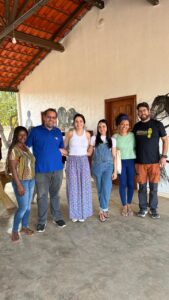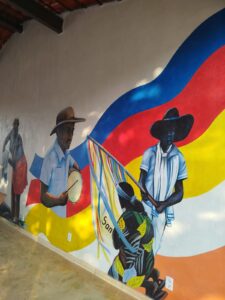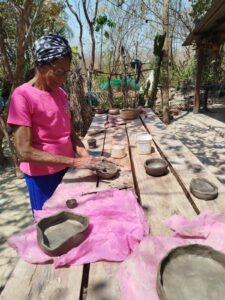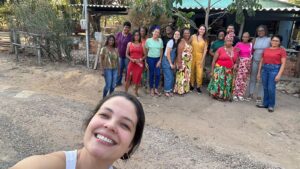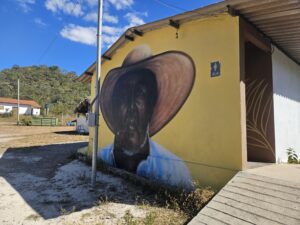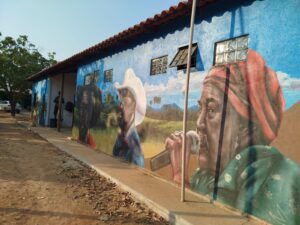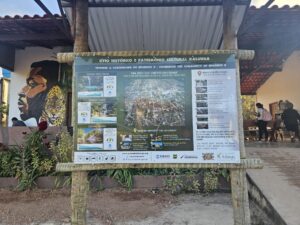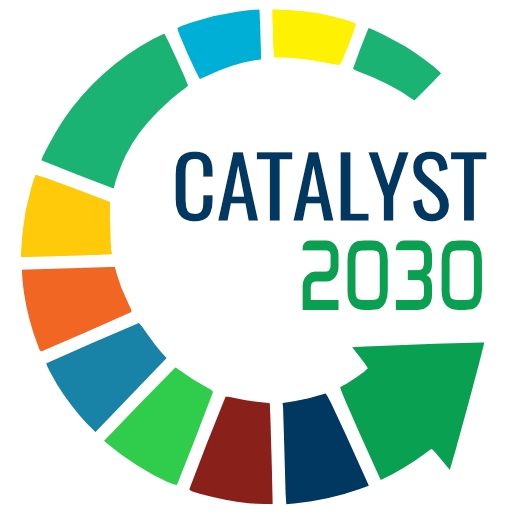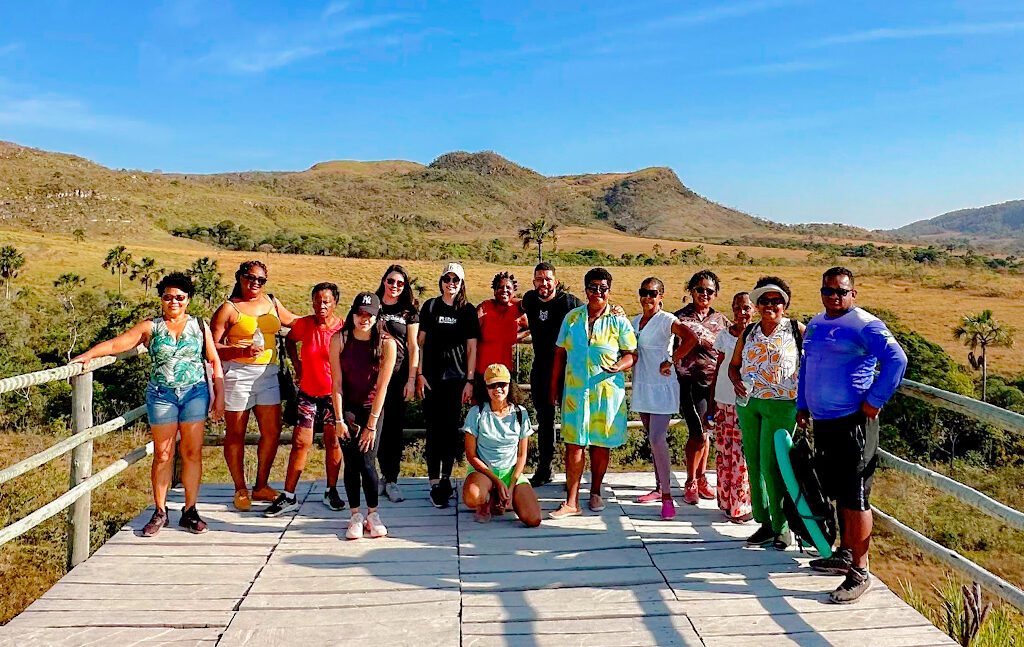
Benchmarking aims to research, analyze, and filter useful strategies from related businesses in order to turn them into potential initiatives. At Raízes Desenvolvimento Sustentável, we use this methodology in our actions, such as the inspiration trips we promote in different contexts. And that’s how a quilombola connection took place earlier this month, September 2024.
We took the leaders of the São Domingos Quilombo, from Paracatu, in Minas Gerais, for an immersion in the Kalunga Quilombo Territory, located in Chapada dos Veadeiros, in Goiás. The aim was to exchange experiences, and organizational and sustainability practices, and learn about the successful trajectory of one of the largest quilombola communities in Brazil.
The Kalunga Quilombo is a territory of extreme historical, social and environmental importance. It was formed by descendants of enslaved people who fled to remote areas of Central Brazil during the colonial period. Today, it is recognized as one of the largest quilombola territories in the country, covering approximately 253,000 hectares.
The technical visit was part of the Tourism Development Plan for the São Domingos Quilombo in Paracatu, Minas Gerais, an initiative of Sebrae MG and carried out by Raízes Desenvolvimento Sustentável.
“What impressed them most was the way tourism is handled there: with a lot of awareness of the impacts it can have, both positive and negative. The feeling of belonging and connection with the land was something that made a deep impression. We saw a clear example of how, with organization, vision, and unity, it is possible to generate income for the community without giving up its values, way of life, and the preservation of the environment.”, said Kaliane Maria, Raízes’ project manager, about the experience.
Shared challenges
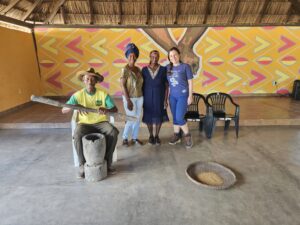 One of the major challenges facing quilombola communities is land demarcation. According to data from the National Coordination for the Articulation of Black Rural Quilombola Communities (CONAQ), only around 5% of the 3,200 quilombola communities recognized in Brazil have been demarcated; and if the Brazilian state maintains the current pace of land regularization of these territories, it will take 2,188 years to fully title all the processes opened at the National Institute for Colonization and Agrarian Reform (Incra).
One of the major challenges facing quilombola communities is land demarcation. According to data from the National Coordination for the Articulation of Black Rural Quilombola Communities (CONAQ), only around 5% of the 3,200 quilombola communities recognized in Brazil have been demarcated; and if the Brazilian state maintains the current pace of land regularization of these territories, it will take 2,188 years to fully title all the processes opened at the National Institute for Colonization and Agrarian Reform (Incra).
In the Kalunga Quilombo, the struggle for land regularization began decades ago, and today, the community reaps the rewards of a legally recognized territory, allowing them to manage their resources autonomously and sustainably. However, this reality has not yet been achieved by the São Domingos Quilombo, as Romilda reports: “We’ve had this dream of demarcating our land for 20 years. Other people come in and it’s not always good because they don’t always speak our language. And we wanted these lands to be demarcated because today we have almost no land.”
Demarcation is vital not only for the security of quilombola families, but also for the preservation of their traditions and the sustainability of their economic activities, such as community-based tourism. The fight for this achievement is a question of fundamental rights. We’ve already talked about it here.
Quilombola interaction and exchange of knowledge
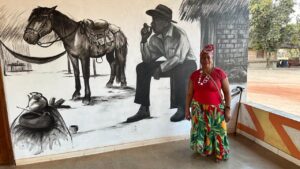 During the visit, the group took part in various activities, including: the Folia de Nossa Senhora das Neves, the community’s traditional festival; a round table discussion at the Akan Kalunga Space about the experience of master Teresa Pereira and her family working with clay; and a visit to the Santa Bárbara waterfall to see the community’s tourism facilities.
During the visit, the group took part in various activities, including: the Folia de Nossa Senhora das Neves, the community’s traditional festival; a round table discussion at the Akan Kalunga Space about the experience of master Teresa Pereira and her family working with clay; and a visit to the Santa Bárbara waterfall to see the community’s tourism facilities.
“What inspired me most about the Kalungas, our brothers, was their unity. The unity they have is that the young people listen a lot to their elders’ wisdom, obey, and pull together. I thought it was beautiful! And I came back more determined, as the leader that I am, to seek this union between the community, so that we can be strengthened more and more, said Romilda de Fátima, one of the leaders of São Domingos.
For Irene dos Reis, another leader: “From our visit to Quilombo Kalunga, we took away lessons about the importance of cultural preservation, the sustainable use of natural resources, and the effectiveness of collective work and community unity. These practices can strengthen the governance of Quilombo São Domingos by promoting greater cohesion, active participation, and efficient management of resources.”
Benchmarking not only facilitates the adoption of good practices but also strengthens the bonds of solidarity between communities, increasing their chances of long-term growth and sustainability. So be it!
The project continues and we’ll be sharing more stories here soon.
